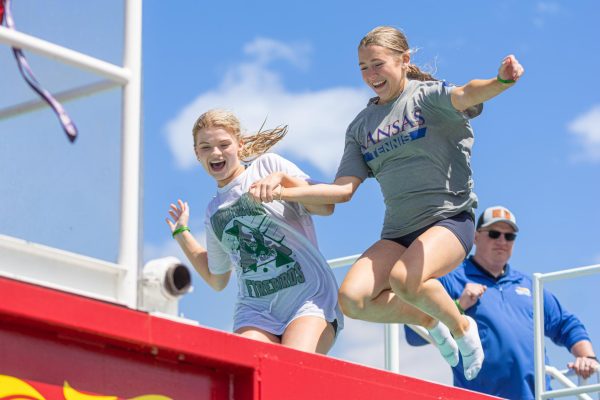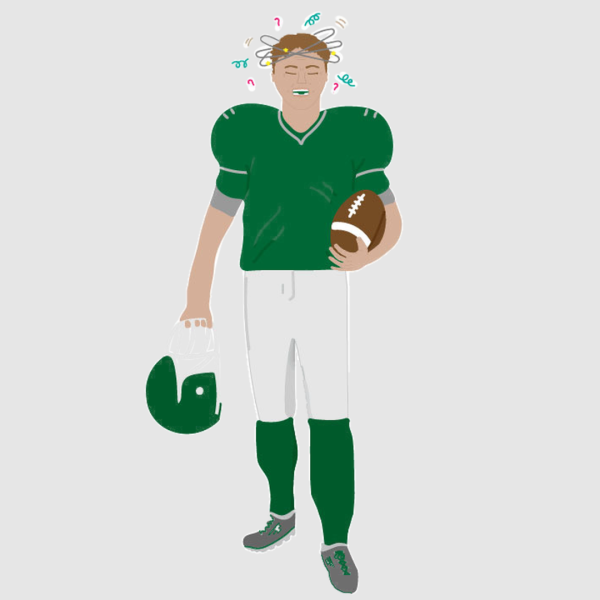Teachers Participate in Tough Mudder
Once someone recites the Tough Mudder pledge, they have agreed to a mental, physical and emotional commitment. The first statement, “I understand that Tough Mudder is not a race but a challenge,” shows the difference between Tough Mudder and other programs: No single person finishes as the winner, rather, everyone who finishes the event gains a new sense of accomplishment and self-pride.
“It’s really just a matter of finishing,” math teacher Samantha Newlin said. “So [the goal is], I would say, making it through all of the physical challenges that you face … being able to say ‘I did it. It was tough, but I made it through the pain.’”
Tough Mudder is like one big, non-kid-friendly obstacle course.
Tough Mudder doesn’t release the specific course details until two weeks prior to the event, but each event includes around twenty different obstacles, touching the elements of fire, ice, mud and electricity. Possible obstacles are: the “Cage Crawl” where participants are on their backs in water and have to pull themselves 60 feet across with only six inches of breathing room, “Fire Walker” where participants have to run through and leap over four foot tall flames and “Electroshock Therapy,” which every race ends with, where participants must run through a field of live wires, which can contain up to ten-thousand volts of electricity.
Tough Mudder is certainly not for the faint of heart. In fact, in Oshkosh, Wis., Tough Mudder is even sponsored by the U.S. Army.
Newlin was initially attracted to the degree of challenge that Tough Mudder presents. She participated in the event on Saturday, Sept. 21 at Heartland Park in Topeka. To prepare, Newlin ran around five miles every other day and did additional strength training.
Newlin said people of different shapes and sizes were there; however, the majority of the athletes were in pretty good shape because of the extreme physical challenges of the event.
Biology teacher, soccer coach and trainer Kelly Barah participated on the same day, yet he said he was unaware of Newlin’s participation until he saw her wearing the Tough Mudder shirt the following Monday at school.
Barah, who found out about Tough Mudder two weeks prior to taking on the challenge, did not train specifically for the event. He designs his workouts to cover all aspects of strength and athleticism in the belief that this training can be preparation for any race or event.
Due to Barah’s swimming phobia, some of the obstacles presented an internal challenge for him.
“There was the whole water part about it … so I was more like ‘uh do I really wanna do this?’” Barah said, “but I just love challenges so I was like ‘sign me up and let’s go.’”
Tough Mudder has three main purpose points.
Tough Mudder doesn’t focus on just one aspect of physical strength; it tests full body strength with obstacles that are challenging in different ways.
The event also promotes a more stress-free challenge than other plain running events. Because the event is untimed, the point is more to overcome challenges than to beat a time. To further the stress-free atmosphere, each participant is handed a congratulatory beer at the finish line.
The last and possibly most important aspect of the event is the sense of camaraderie.
“That is the greatest thing about it,” Barah said. “It’s not an individual thing because there’s no way you could do it by yourself, it’s more about teamwork … you make so many friends along the way because people are needing help, you need help … I just think as a country if this thing really took off, we would see a whole lot of bonding among many, many groups.”
Newlin said she helped and received help throughout the day from multiple people who weren’t even on her original team. The participants weren’t extraordinarily benevolent, Tough Mudder is simply designed to enhance the generosity in participants.
Newlin described one obstacle as a wooden wall that leaned in toward participants. In order to conquer the obstacle, multiple people had to be involved. Because there were no steps, somebody had to offer a push up from the bottom and a pull over from the top.
“I’ve never done anything like this,” Barah said, “and I’m not stopping to do anything like this anymore after having done this first one, I’m already looking into signing up for the next Tough Mudder.”
For the ambitious underaged kids interested in this challenge, kids under eighteen can commit to being a Tough Mudder in Training.
Sophomore Sydnee Rheums committed to this after hearing about the event from her aunt and uncle who both participated.
“[Tough Mudder in Training is] kind of just like a general term,” Rheums said. “I mean I’m not like shocking myself with any electric wires or anything to prepare for that, but it’s basically just like strength training like saying I’m gonna run, … and I’m gonna build up my cardio and stuff like that.”
Rheums said that once you order the Tough Mudder shirt, they write down your e-mail and on your eighteenth birthday, they send you information on the event dates for that year.
“I really don’t know that it’s for everybody,” Newlin said. “I think it’s for the people that are maybe just a little bit on the crazy end … the fear I think is what drives you a little bit.”







